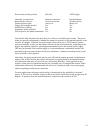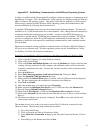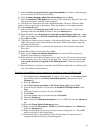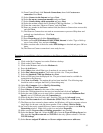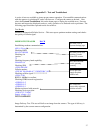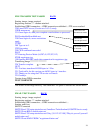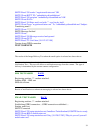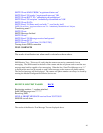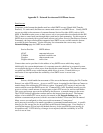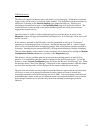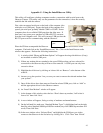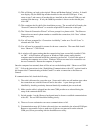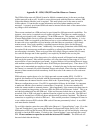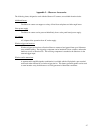
41
Appendix F - Network Services and Cell Phone Access
Email servers
Computers on the Internet that handle email are called SMTP servers (Simple Mail Transfer
Protocol). To send email, the Observer camera needs access to an SMTP server. Usually SMTP
servers provided to the customers of common Internet Service Providers (ISP's) such as AOL,
MSN, or Earthlink restrict access to their servers only to account holders associated with the ISP.
This is done to control mail sent through their system and to limit spamming. For this reason an
SMTP server associated with a typical email account won't allow access by the Observer Camera.
Fortunately, the large cellular phone companies have SMTP servers on their networks that are
accessible by their customers. Use the following list to determine the correct entry on the
Network Settings page for SMTP server address.
Service Provider SMTP address
AT&T smtp.attwireless.net
T-Mobile myemail.t-mobile.com
Cingular smtp.mymode.com
Cingular alternate cwmx.com
Contact other service providers for the address of any SMTP servers which they supply.
Additionally, the system administrator of a corporate network, which has its own email system,
can configure the server to allow access from outside the normal network. The Observer camera
can utilize any SMTP server on the Internet which allows it access. If email delivery or
notification is not required then the availability of an SMTP server is not an issue.
FTP servers
Servers, which handle the movement of files across the Internet utilizing the File Transfer
Protocol, are called FTP servers. Access to an FTP server is required for the Observer Camera to
transfer image files utilizing the FTP delivery option. Fortunately FTP servers do not have the
same restricted access that SMTP servers do. Common ISP's (AOL, Earthlink) usually provide
access to at least a small amount of storage space on their FTP servers for each account holder.
This server and storage space can be utilized by the Observer to transfer images to the server.
The FTPJPG desktop application can then retrieve the images from the server. The Internet
address of an available FTP server needs to be entered on the Network Settings page. In
addition a username and password, which is associated with the FTP account, must be entered.
Many servers are configured to allow access with a username of "anonymous"
and a password consisting of an email type address (yourname@somedomain.com). A specific
directory for file storage can also be specified on the Network Settings page. If no directory is
specified the images will end up in the default directory for the specified account (usually an
acceptable result). If FTP delivery of images is not required, then the availability of an FTP
server is not an issue.



